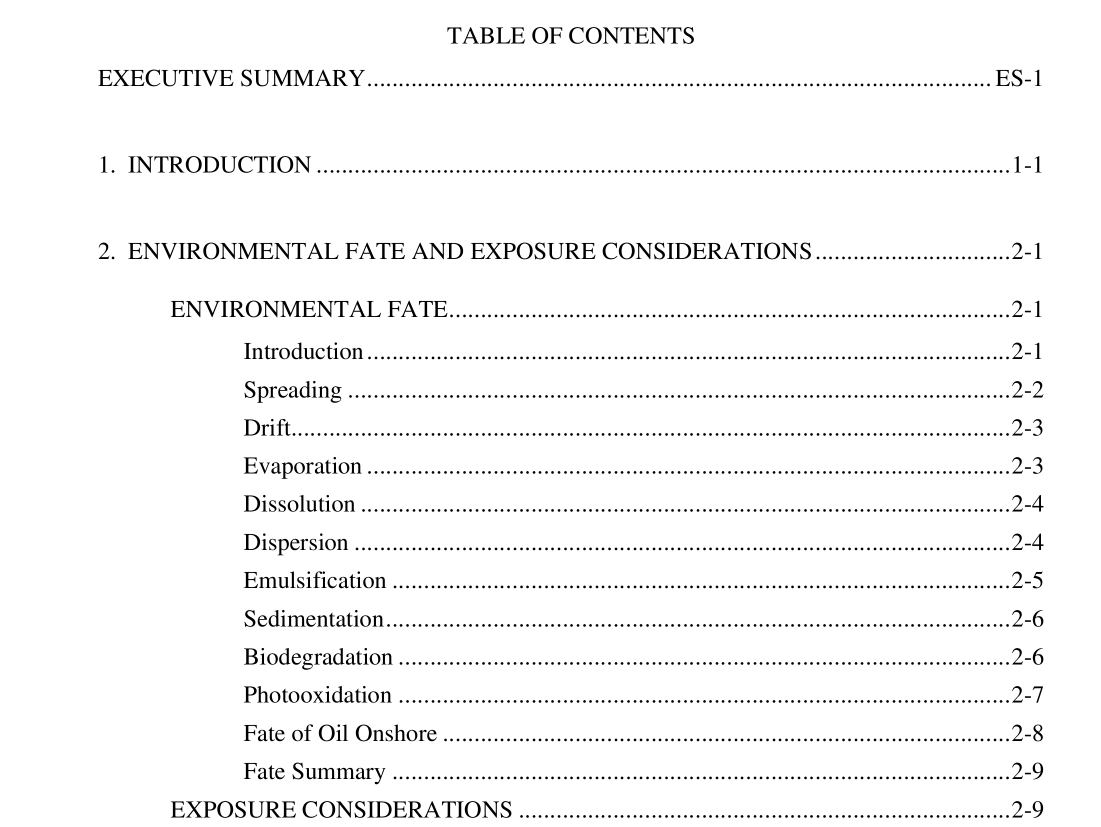API Publ 4689 pdf download

API Publ 4689 pdf download.Chemical Human Health Hazards Associated With Oil Spill Response
This report provides an overview of potential human health hazards encountered by personnel involved with petroleum product spills or leaks. Widely distributed products are covered, including crude oil, gasolines, various middle distillates (e.g., kerosene, jet fuel, diesel fuel, and home heating oil), heavy fuel oil, and asphalt. The main objective is to define basic components and products of concern based on their inherent toxicity and potential risks to oil spill workers. In addition, environmental factors that may affect the risk of exposure to the various components are discussed. A brief summary of important exposure considerations is included (Section 4). In order to discuss the potential human health hazards associated with these petroleum hydrocarbon products, it is helpful to break down the products into the various components of concern and understand the toxicology of those components. Table 2-1 links the various products to their associated components of concern. The main components of health concern in Table 2-1 include benzene, hydrogen sulfide, n-hexane, naphthalene, toluene, trimethyl benzene, polycyclic aromatic hydrocarbons (PAHs) and, in specific instances, organic lead compounds. Acute health hazards associated with many components of concern include depression of the central nervous system, and irritation to the skin, eyes, and respiratory tract. Chronic exposure to some components, such as benzene and polycyclic aromatic hydrocarbons, has been associated with cancer risks. Other than the toxicological properties of the components and products of concern, other factors affect the nature of health hazards during spill response activities. These include environmental conditions, the physical characteristics of the products, and the type of spill or leak scenario and time factors. The environmental fate of a spilled material is determined by various mechanisms including evaporation, spreading, dissolution, drift, dispersion, and emulsification.
When oil is released into the environment, numerous processes begin to affect the environmental fate of oil components and the chemical-physical properties of the oil. The composition and physical/chemical properties of crude oil and refined products are variable; therefore, no two crude or refined oils will behave exactly the same in the environment. In addition, meteorological and oceanographic conditions will affect the movement and weathering of oil. Spreading, drift, evaporation, dissolution, and dispersion are processes that begin immediately once oil is spilled. Figure 2-1 illustrates these processes. One process can occur at a greater relative magnitude than another process. For example, in the early phases of an oil spill, spreading occurs at a greater rate than oil drift. Dispersion of oil occurs at a greater magnitude than dissolution since only small amounts of oil components are soluble in water. Emulsification, sedimentation, biodegradation, and photooxidation can occur within the first day of a spill, but these processes are not as predominant as spreading, evaporation, and dispersion. Some of the fate processes, for example, evaporation, may be most relevant to human health exposure. Other processes, such as photooxidation and sedimentation, are not important determinants of human exposure. The major processes are discussed here to provide a general understanding of the environmental fate of spilled oil.An oil slick contains areas of variable thickness. Under relatively calm conditions, oil slicks typically may have a thick (z 1 mm) area surrounded by a more extensive thin (< 10 um) area. The thick portion contains the greatest volume of oil (approximately 90%) while the thin portion of the slick contains the balance. The thin area, however, represents 80% to 90% of the total slick area. Local physical factors make predictions of spreading difficult. Wave and wind action modify oil spreading. Natural surface convergences (areas where currents meet) or divergences (areas where adjacent currents move in different directions) may cause accumulations or separations ofoil. As a result, windrows (streaks) and oil patches may occur. Spreading is an important determinant for rates of dissolution, dispersion, and photooxidation of oil.









